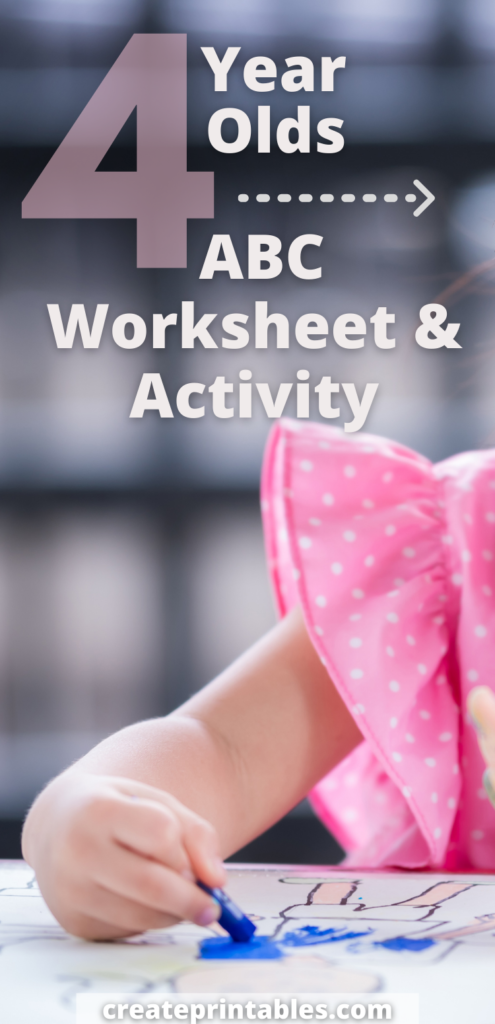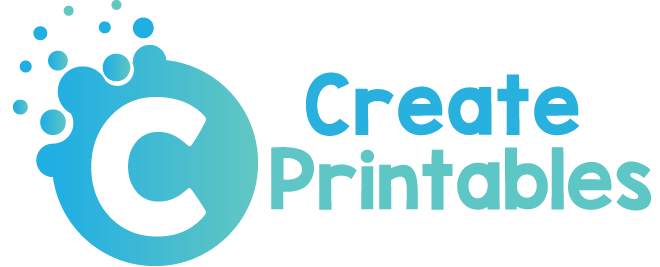You now have an amazing, active, independent 4-year old. As they discover more of the beautiful world that we live in, they are itching to do things themselves. That is a great thing and you should definitely take advantage of that!
Let’s talk about ways that you can help your wonderful 4-year old how to practice pre-writing skills. Now that they are four, they should be able to trace and even free draw a triangle, a cross, an X and a square. This is fantastic because these are definitely very important precursors to learning to write letters like L, M, T, etc.

Sound Awareness and Recognition
An important aspect for writing success involves many things. Some of those things include recognizing letters by sight, recognizing letters by sound, tracing letters and also beginning to make connections between the names of people and/or objects and the letters that make up those names.
- Alphabet Letter Chart
- A-Z Tracing (bubble letters)
You have to make sure that your 4-year old is able to recognize sounds, that they are aware of some of the letters that make up words. For example, if you show your kid a doll, your 4-year old will learn to discriminate letter sounds and the written word. Your kid can say “doll” and then say “/d/” “/o/” “/l/.”
But start slow and start with familiar objects. By starting slow, I mean that you start with maybe just the beginning sound. For “cat,” they hear the sound /k/. For the word “rock,” your kid will be able to say that they hear the sound /r/.
Show your kid the picture of an object and have your child name the picture and say the beginning sound for that object.
There are also some wonderful alphabet sound tubs that you can invest on. Kids LOVE these! They are 26 little plastic containers with one letter of the alphabet. Inside each, there are 3-5 tiny objects that kids can recognize that begin with that letter of the alphabet.
Letter Placement on Line
If you haven’t gotten a set of lowercase letters and numbers at the dollar store, be sure to make a trip as soon as possible and get several. Try to get those that have letters that are well-formed. If you want something fancier and more formal, then you can get a Montessori moveable alphabet. There is a lowercase manuscript, uppercase manuscript and cursive, so be sure you start with manuscript lowercase.
This worksheet also has Letter placements.
You will also need sentence strips or thin washi tape. Washi tape is kind of like painter’s tape or masking tape, but smaller and thinner. Use the sentence stripes or tape to show your kid how to place letters on the lines properly. The sentence strips are easier because you can place to use and remove quickly when you are done. I love using our dry erase sentence strips because we get more use out of them and have to get less. Plus, we save on paper.
If you want to use washi tape, then you will need a piece of cardboard, a smooth table or a hard surface that is at least 12-14 inches long. Place the washi tape for the bottom line. Then place one of your alphabet letters (I use the letter “b”) above the line and now I know where to place the middle dashed line and where to place the top line.
Your kids will have a lot of fun learning to place the letters on the lines correctly. Start slow, with only 3 letters until they master them. Then add 3 more and so on. Personally, I always introduce the “short “letters first (a, e, I, o, u, n, m, s, c, etc).
Once we get through all of the short letters and my kid mastered them without help, I introduce the “tall” letters (t, l, h, k, b, etc). These are a good Segway to the short letters because they also sit on the bottom line, even though they go up higher than the short letters.
Lastly, I introduce the “low” letters. The low letters are y, g, q, p, etc. These can be a little tricky because kids have a tendency to also place them on the bottom line. It takes a little while to get them to master the idea of these letters “hanging off” below the bottom line. But don’t worry, they will get it.
(for reference: https://www.thenaturalhomeschool.com/foam-alphabet-letters.html)
Name Tracing Sheets
Another great thing to try with your 4-year old is having your kid trace their name. It is doubly helpful to use sentence strips for this because when you place the letter of their name correctly on the lines, they will make that connection more easily.
Why not take it a step further and get your own free editable name tracing sheets! Simply go to Name Tracing Practice page to make your own tracing worksheets for your kid’s name, object words or anything that you want! With time, patience and perseverance, your 4-year old will be writing their name and they will be so proud (and so will you!).

